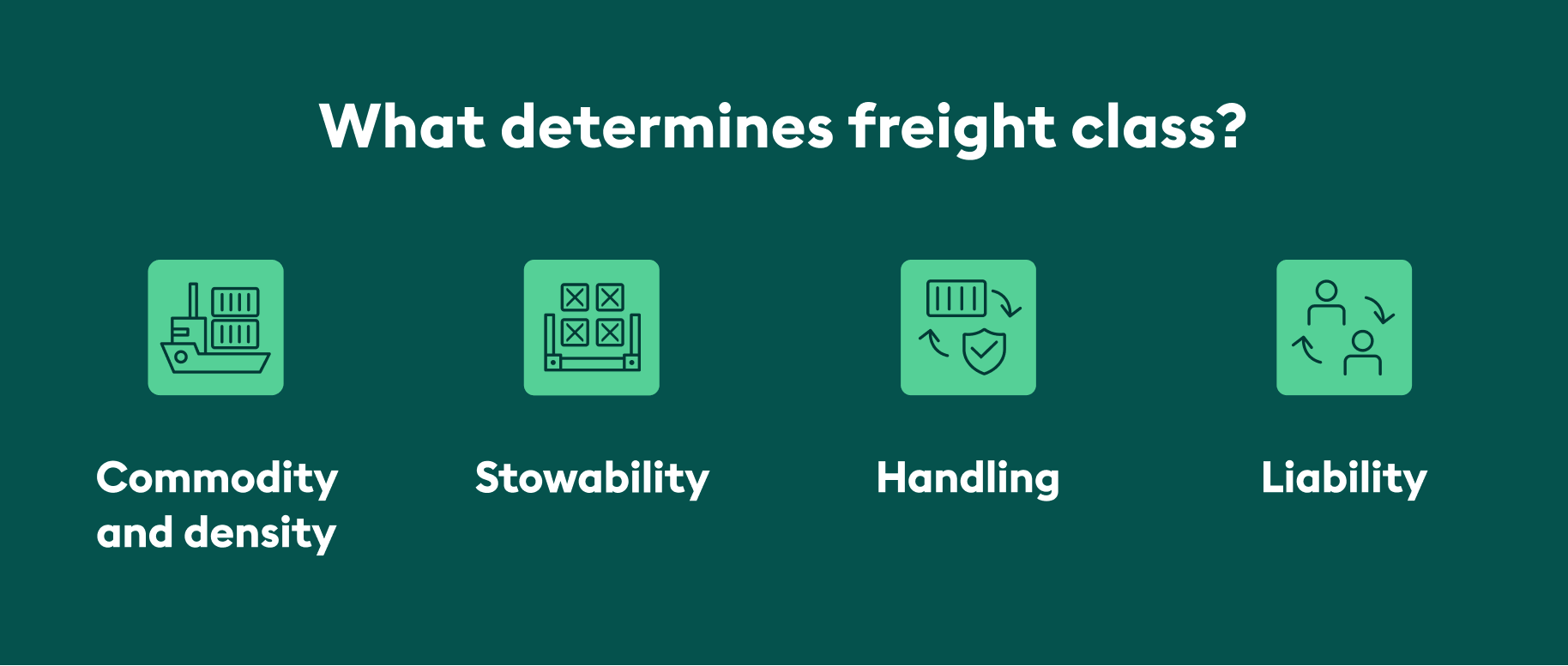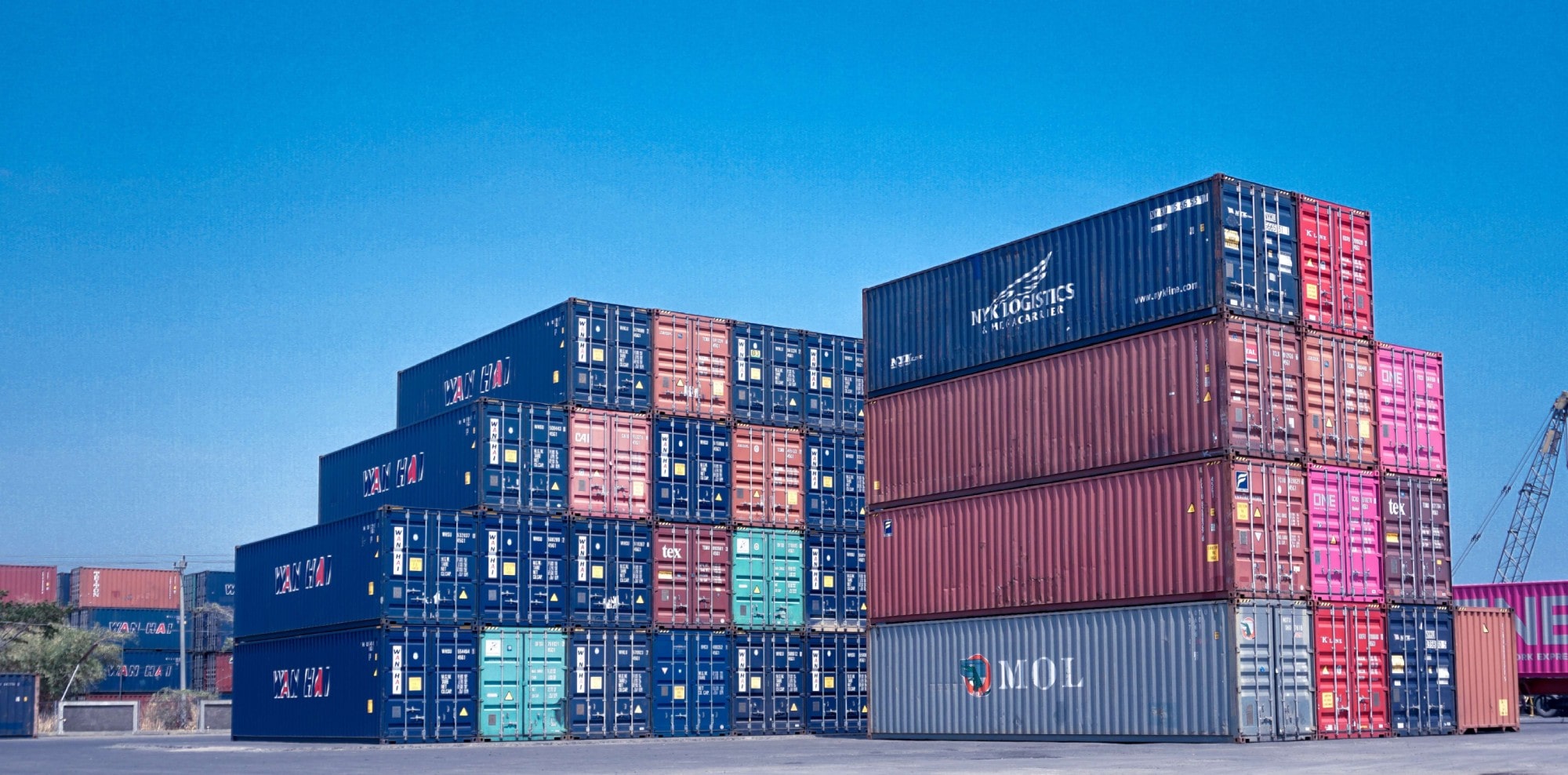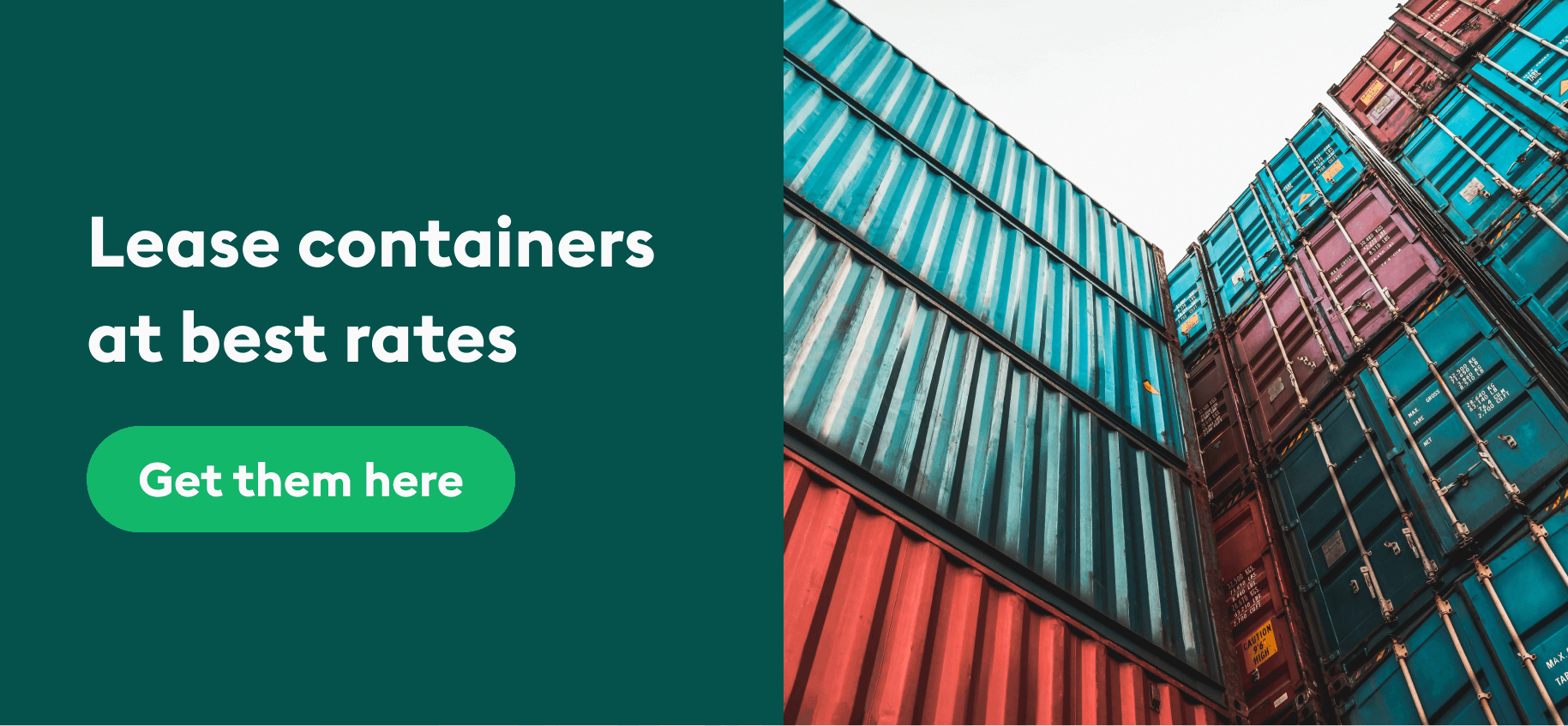Before you ship goods, you’ll need to know which freight class your cargo falls into. Why? Because this will determine how much you’ll need to pay for shipping. Read on for everything you need to know about freight classes.
Freight transit is constantly expanding, with estimates suggesting a 45% increase in freight tonnage by the year 2040 in the US alone. This equates to about 9 billion tons of freight added to the 54 million tons already shipped daily.
In an increasingly high-demand and fast-paced industry, it’s easy to see why standardization is necessary, especially when it comes to categorizing cargo. Freight classes are one way of maintaining such standardization and consistency in the ever-evolving shipping sector.
These categories provide both carriers and shippers with a common language through which to determine freight prices, reduce risks and avoid unnecessary disputes. Read on to learn more about freight classes and how to correctly classify your goods.
Looking to lease shipping containers at the best rates, from reliable suppliers? At Container xChange you can choose from 50,000+ containers available in over 2,500 locations worldwide. Simply select ‘I want to use containers’ and add your pick-up and drop-off locations. The press ‘search. You’ll be finding and comparing offers that match your criteria in no time at all.
What is freight class?
A freight class is a grouping system used to classify commodities transported via LTL (Less than Truckload) freight shipping. This system helps to ensure that customers receive a fair price when shipping freight.
The freight class your goods are assigned to will depend on a number of factors, including the type of commodity and the density of the freight. More on this in the next section.
Freight class is also used to help carriers to organize and pack cargo. This is especially important when handling fragile and heavyweight goods. Freight classes guide workers on what freight is stackable and least likely to be damaged during transit.
In general, the higher the freight class the more expensive the shipment. This is because a higher freight class usually indicates that cargo is either heavier, larger or trickier to handle.
Looking for the most affordable way to ship your freight? Leasing SOCs on Container xChange is cost-effective, and gives you both flexibility and freedom. Learn more about how to get shipping containers of all types and sizes quickly and easily on our leasing platform now.
What is LTL shipping?
LTL stands for ‘Less than Truckload’, and basically means shipping less than a truckload of freight as opposed to a full truckload (TL). With LTL, you share the space with other businesses, allowing the carrier to fill the container with other shipments until it reaches capacity.
LTL shipments typically weigh between 68 kg / 150 pounds and 6,800kg / 15,000 pounds and are too small to require an entire truck to transport.
With LTL service, shippers only pay for the space their freight takes up, making it a more affordable shipping option than TL (Truck Load) service.
Freight classes are used to categorize LTL shipments, so that various shippers’ goods can be loaded safely into each container.
Factors that determine freight class
There are four main factors that determine the freight class of a shipment. Let’s dive into these now.
Commodity and density
Some commodities are not categorized based on density and have predefined freight classes. On the other hand, many commodities are density-based. The density is determined by taking the total cubic feet and dividing it by the total weight in pounds. Freight with lower density results in a higher freight class and thus a higher shipping cost.
Stowability
As long as it’s packed properly, most freight should be easy to stow in trucks, trains, boats and ships. However, certain cargo is government regulated or can’t be loaded with other goods. Commodities of certain shapes and weights can also be tricky to stow, especially with other shipments. If cargo is difficult to stow, it will have a higher freight class and thus a higher cost.
Handling
Cargo that’s heavy, oddly-shaped or difficult to load and stow will be categorized as ‘difficult’ or ‘dangerous to handle’. A carrier may categorize freight that’s more tricky and hazardous under a higher freight class because overall, it’s more more risky and time-consuming to work with. Once again, this freight will have a higher cost.
Liability
The liability refers to the likelihood that a particular category of cargo could be stolen, damaged or damage other cargo. This includes heavy cargo that could shift during transit, as well as perishable goods that can spill, and chemicals that could explode or combust. The higher the liability, the higher the cost to ship.
How to determine freight class
Most commodities will fit into one of the 18 freight classes, which are represented from 50 – 500 below. The price rises as you move down the list, with class 50 being the cheapest, and class 500 the most expensive goods to ship.
The four factors in the previous section help to determine which class each commodity fits into.
| Freight class | Example commodities | Density (lbs/cubic foot) |
| 50 | Nuts, bolts, steel rods | 50+ |
| 55 | Hardwood flooring, bricks | 35-50 |
| 60 | Ceramic tiles, car parts | 30-35 |
| 65 | Books, bottled beverages | 22.5-30 |
| 70 | Food items, paper in boxes | 15-22.5 |
| 77.5 | Tires, bathroom fixtures | 13.5-15 |
| 85 | Crated machinery, pharmaceuticals | 12-13.5 |
| 92.5 | Computers, monitors, refrigerators | 10.5-12 |
| 100 | Car & boat covers, wine cases | 9-10.5 |
| 110 | Cabinets, framed artwork | 8-9 |
| 125 | Small household appliances | 7-8 |
| 150 | Auto sheet metal parts, bookcases | 6-7 |
| 175 | Clothing, couches, stuffed furniture | 5-6 |
| 200 | Sheet metal, packaged mattresses | 4-5 |
| 250 | Flat screen TVs, bamboo furniture | 3-4 |
| 300 | Wood cabinets, tables, grass | 2-3 |
| 400 | Light fixtures | 1-2 |
| 500 | Bags of gold dust, ping pong balls | <1 |
How to calculate freight density
So you’ve got freight you want to ship, how do you calculate the freight density to get an idea of the freight class? Here are four simple steps to calculating the freight density:
Step 1:
Start by measuring the length, width, and height of your shipment. Remember that this measurement includes pallets and other packaging around your actual shipment. Round up to the next inch. You’ll have to repeat this step for shipments that have multiple pieces or pallets and add them all together.
Step 2:
Multiply the height, width, and length measurements to get the total cubic inches of the shipment. Divide this number by 1,728 to convert cubic inches to cubic feet. If you have many pieces, do the same for each one. Add the cubic measurements for each individual piece together to get the total, then convert to cubic feet if needed.
Step 3:
Determine the weight of the shipment in pounds. Divide the weight by the total cubic feet of the shipment to get the pounds per cubic foot or density. For multiple pieces, add the total weight of each piece together before dividing by the total cubic feet.
Step 4:
Once you have the freight density, use the LTL freight class chart above to determine the freight class.
Lease shipping containers at best rates
Now you know all about the different freight classes as well as the importance of categories for both shippers and carriers.
If you’d like to find the most cost-effective way to ship goods one-way, we’ve got you covered. Container xChange is an online marketplace for leasing and trading shipping containers of all types and sizes. Here you can lease SOC (Shipper Owned Containers) at the best rates from reliable suppliers.
With SOCs, get the freedom and flexibility you need, and avoid nasty demurrage and detention fees altogether. Sounds good right? Here are the easy steps to finding containers to lease one-way in no time at all.
Decide on criteria and price range
First of all, decide on the shipping container type and size you’re looking for. We’ve got standard and special containers of all sizes available on our platform. It’s also important to have an idea of the rates you’re willing to pay before you start browsing.
With our Insights tool, you can browse leasing rates in 130 locations to get an idea of what you should be shelling out before you start your search. So convenient!
Browse offers
Once you’ve finalized your criteria, it’s time to hop onto our leasing platform and start browsing offers. On xChange, it’s quick and easy to compare multiple options at the same time to shortlist the best option for your needs and budget.
Finalize the deal
Once you’ve found an offer you like, it’s time to negotiate the rates and iron out the final details. Here you can discuss the free days and per diem charges you’re comfortable with. Communicate directly with the seller, right on the platform – no middlemen involved.
Make safe payments
The final step? Making the payment, of course! If you’re worried about payments being safe, we’ve got you covered. All transactions are 100% secure with the xChange Wallet. You can also keep track of all of your finances in one convenient place on the platform.
Curious to find out more about what we have to offer? Here are just a few of the benefits you’ll get when signing up as a member on xChange:
- 0% commission on deals
- Negotiable prices
- 50,000+ containers available in over 2,500 locations worldwide
- 1,500+ vetted and pre-approved partners to work with
- 100% payment protection with the xChange Wallet
So what are you waiting for, click below to set up your free demo with one of our friendly experts today, and you’ll be leasing containers for your freight at the best rates in no time at all.
Common FAQs: Freight class
What is freight class?
Freight class is a grouping system used to classify freight that’s transported via LTL (Less than Truckload) shipping. This system ensures customers receive unbiased prices when shipping freight.
How do you determine the freight class of your cargo?
The freight class of your cargo is determined by four factors: Commodity and density, ease of handling, liability and stowability.
How many freight classes are there?
There are 18 freight classes, categorized from 50-500, ranging from lowest price to highest price. Any commodity you choose to ship will fall into one of these classes, which will determine the cost involved.
Why is the freight class important?
The freight class is important for a number of reasons. For one thing, it determines the freight's overall ‘transportability’ – how easy or difficult it will be to transport a particular commodity. Besides this, the freight class also indicates how much you can expect to shell out for your shipment.





